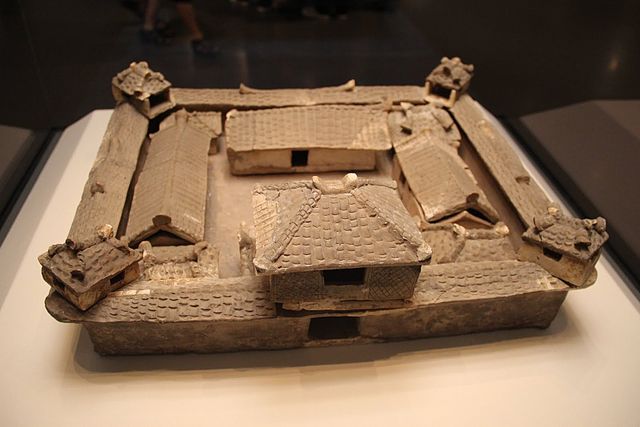The Three Kingdoms of Cao Wei, Shu Han, and Eastern Wu dominated China from 220 to 280 AD following the end of the Han dynasty. This period was preceded by the Eastern Han dynasty and followed by the Western Jin dynasty. Academically, the periodisation begins with the establishment of Cao Wei in 220 and ends with the conquest of Wu by Jin in 280. The period immediately preceding the Three Kingdoms from 184 to 220 was marked by chaotic infighting among warlords across China as Han authority collapsed. The period from 220 to 263 was marked by a comparatively stable arrangement between Cao Wei, Shu Han, and Eastern Wu. This stability broke down with the conquest of Shu by Wei in 263, followed by the usurpation of Cao Wei by Jin in 266, and ultimately the conquest of Wu by Jin in 280.
Bronze turtle holding a cup, Eastern Wu
Cao Zhi as depicted in Goddess of Luo River (detail) by Gu Kaizhi
Three Kingdoms in 262, on the eve of the conquest of Shu, Wei and Wu
Pottery dwelling around a large courtyard, a siheyuan. Unearthed in 1967 in a tomb of Hubei built during the kingdom of Eastern Wu, National Museum of China, Beijing
Wei (220–266), known as Cao Wei (曹魏) or Former Wei in historiography, was a dynastic state of China and one of the three major states that competed for supremacy over China in the Three Kingdoms period. With its capital initially located at Xuchang, and thereafter Luoyang, the state was established by Cao Pi in 220, based upon the foundations laid by his father, Cao Cao, towards the end of the Eastern Han dynasty.
Cao Wei horse figure.
Celadon standing figures, Haidian Museum, Cao Wei Dynasty.
A Cao Wei tomb, 247 CE







